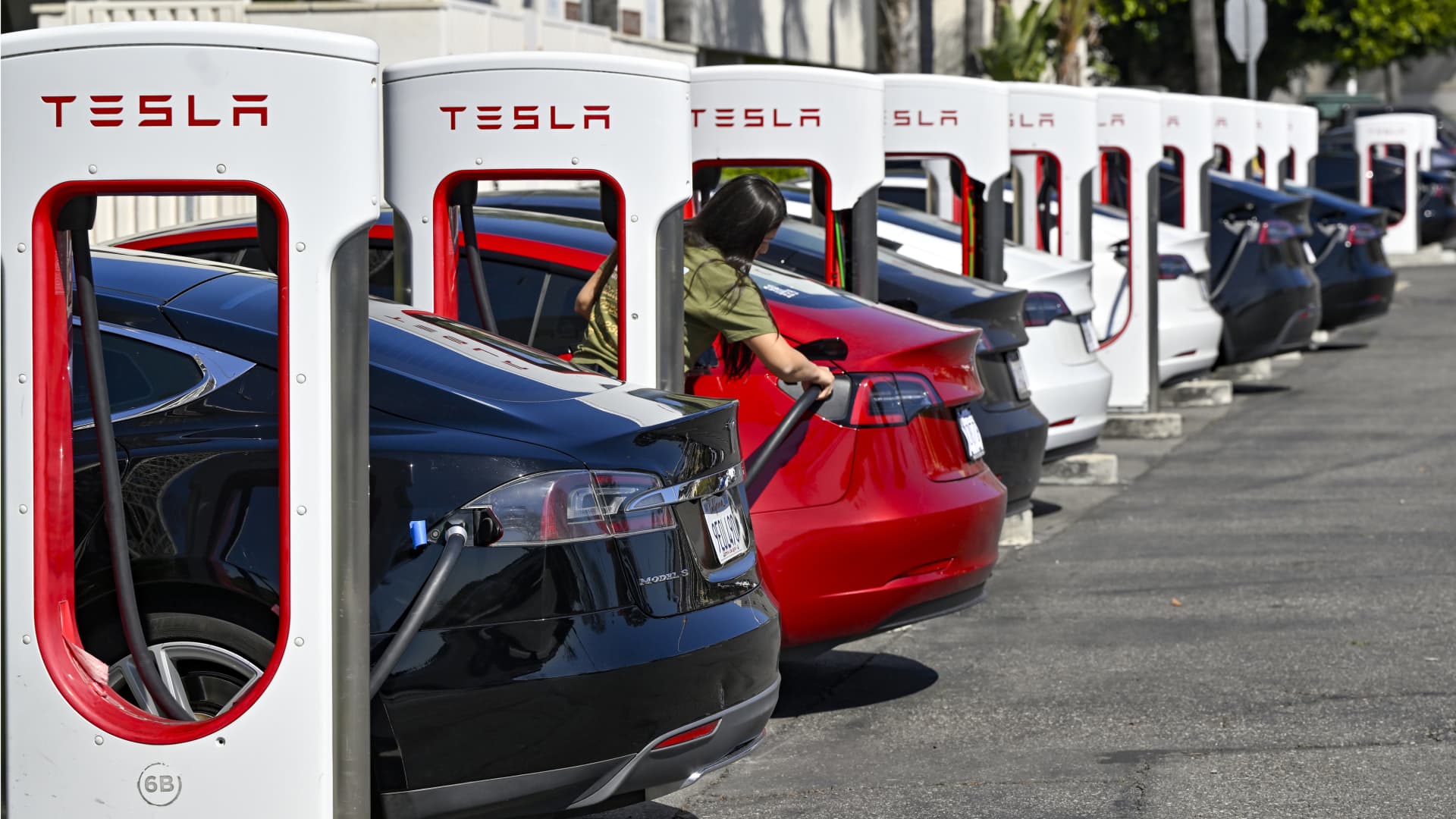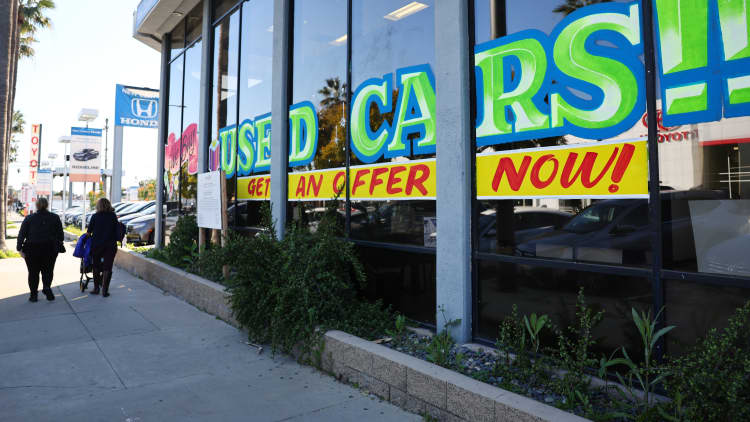Poor resale values of EVs threaten adoption, warn some experts


Drivers charge their Teslas in Fountain Valley, California, on March 20, 2024.
Jeff Gritchen | Medianews Group | Getty Images
A car loses value as soon as you drive it off the lot, but electric vehicles are taking this adage to a new level. That’s becoming a major barrier to wider adoption, according to some industry and investment experts.
A recent study from iSeeCars.com showed the average price of a 1- to 5-year-old used EV in the U.S. fell 31.8% over the past 12 months, equating to a value loss of $14,418. In comparison, the average price for a comparably aged internal combustion engine vehicle fell just 3.6%.
While lower used EV prices could increase their desirability to some buyers, they can also reduce demand for new electric vehicles, according to Karl Brauer, executive analyst at iSeeCars.
“The value a new car loses in the first few years is the single most expensive aspect of owning a new vehicle,” he said, explaining that “as more new car shoppers become aware of the massive drop in EV values they will be less interested in buying one.”
Speaking to CNBC’s “Street Signs Asia” on Monday, David Kuo, stock analyst and co-founder at the Smart Investor, said that the inability of EVs to retain value had kept him from investing in the industry.
According to Kuo, EVs are analogous to other consumer electronics like laptops and cell phones in that they tend to lose value and relevance quickly after being sold.
“The same [depreciation] is going to happen to electric vehicles; it’ll probably cost you $20,000, $30,000 to buy one, but in a year’s time it will depreciate much faster than an internal combustion engine car,” he said.
Industry insiders have also flagged EV resale problems. Speaking to Bloomberg late last year, representatives from VW and Toyota said depreciation was hurting the value proposition of their battery-powered vehicles.
Kuo further argued that the software and computing capabilities of used EVs may become outdated and incompatible with updates by the time they are sold or even beforehand. That will be a “lightbulb moment” when buyers realize they paid too much in the first place, he added.
Despite EVs’ apparent depreciation issue, its causes might have less to do with the technology itself and more to do with market conditions.
According to iSeeCars, dramatic drops in used electric vehicle values in the U.S. have largely been driven by aggressive price cuts by Tesla amid a broader price war in the EV market.
Tesla is the dominant EV seller in the U.S. and as a result of lower prices for its new EVs, buyers are less likely to entertain the same price levels for used alternatives.

“If [Elon Musk] continues to reduce Tesla prices in an effort to stimulate sales, he’ll continue to pull the entire market down, as he did over the past 15 months,” iSeeCars’ Brauer said.
In an October earnings call, Musk defended the price cuts, emphasizing the importance of cost to consumers.
“It’s not an optional thing for most people; it is a necessary thing. We have to make our cars more affordable so people can buy them,” he said.
In the following quarter’s earnings call in January, chief financial officer Vaibhav Taneja said the company would continue to focus on its cost reduction efforts in 2024.
Since then, the EV price war between Tesla and Chinese competitors has shown little signs of letting up.
Additionally, overproduction of EVs relative to demand has created excessive supply, making it unlikely for new and used EV prices to rebound in the near term, according to Brauer.
What is an ongoing issue for the EV market, however, may be a boon for electric and combustion powered hybrids, which are showing increasing strength in new and used vehicle markets.
The average price for used hybrid vehicles fell only 6.5% or $2,135 last year — a fraction of the decline of the average EV.
“Hybrids are an excellent stepping stone between gasoline and electric cars, and I expect to see them increasing in popularity over the next 10 years,” Brauer said.